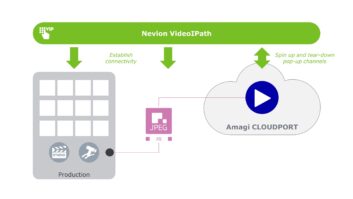Service providers often question which approach is best when launching and deploying video services. There are several options: traditional on-prem deployment or leveraging the cloud — either using SaaS (Software as a Service) or hyper-scalers like AWS and Google Cloud. The reality is that the two categories offer different benefits depending on the components of the solution and the objectives of the project.
Benefits of the cloud
Let’s say a service provider is looking to launch a FAST (Free Ad-supported Streaming Television) channel. A key driver for FAST is the time to market (TTM), as there is a big opportunity to stream content, funded with advertising, to audiences in many parts of the world. To launch a FAST offering quickly, service providers naturally turn to the cloud — with functions such as channel assembly and targeted advertising already available as SaaS. This SaaS-based, pay-per-use business model is also appealing due to its low-risk nature, as no large upfront investment is required.
These functions are part of the video control plane: the video chunks do not actually travel through the cloud, rather the manifest files do.
Limitations of the cloud
As a video service scales and audiences grow, with FAST offerings being delivered to millions of consumers on connected TVs, the cloud can present some limitations. One limitation is quality: when delivering content from the cloud, it has to travel through large sections of networks (i.e., peering/transit, core network of the ISP, aggregation, access, etc.), meaning there is a greater chance of congestion or packet loss-related problems. In time, this results in a poorer quality of experience for consumers, especially for live services where either the video resolution quality is reduced, the live action is delayed due to a higher latency, or freezing and rebuffering increases.
On-prem video deployments solves the scalability challenges by having the video delivery capacity close to the consumers. Typically, capacity is near the edge of the networks, guaranteeing exceptional quality for consumers. This is critical when millions of consumers are watching the same content. Most 4K streaming services leverage on-prem video delivery, such as Netflix with its Open Connect caches or DAZN when it leverages multicast ABR capacity inside the ISP network.
Moreover, video delivery from the cloud can quickly become expensive. Whether you choose to use a global CDN — such as Akamai or Limelight — or one of the hyperscalers, the cost is proportional to the traffic delivered. Therefore, the more traffic delivered, the higher the costs. The costs for delivering services in higher 4K quality can sometimes be prohibitive.
Deploying on-prem capacity helps cap these costs. If a workload is predictable — for instance, 300 live channels need to be transcoded and packaged 24/7 — the benefits and cost savings enabled by the cloud are comparably less attractive.
Furthermore, on-prem solutions, which are typically a capex investment, tend to pay for themselves very quickly as they are licensed based on capacity. Service providers pay for the number of channels or Tbps delivered, rather than monthly TB volume consumed.
The shift to hybrid
One way to think about the difference between on-prem versus cloud is comparing it to owning a car versus taking an Uber. Uber is a very convenient option, and is usually available when you need it, but is less cost-effective than owning a car if you travel often. Many people prefer buying a car and maintaining it because it is better suited to their needs and is cheaper to use.
Having said that, it is interesting to see the car industry evolve as car-sharing schemes are available in large cities, and there are flexible monthly rental schemes allowing consumers to choose between car models for a fixed fee.
The video world is making a similar shift. Cloud options do not have to be strictly SaaS-based; sometimes service providers want their video workloads to run in their own cloud, either on-prem (i.e., running on their own private cloud), or on a cloud infrastructure that can be better suited to their needs (i.e., a deployment on bare-metal servers in an Internet eXchange Point (IXP) that is managed, presented and offered by the technology provider as a service).
Conclusion
Going forward, a combination of on-prem and cloud technology will be the preferred approach for video delivery, with the cloud reducing TTM and risks and on-prem capacity optimising costs.
The two concepts are far from being perpendicular; rather, it is the combination of the two approaches that will lead to the best solutions.






